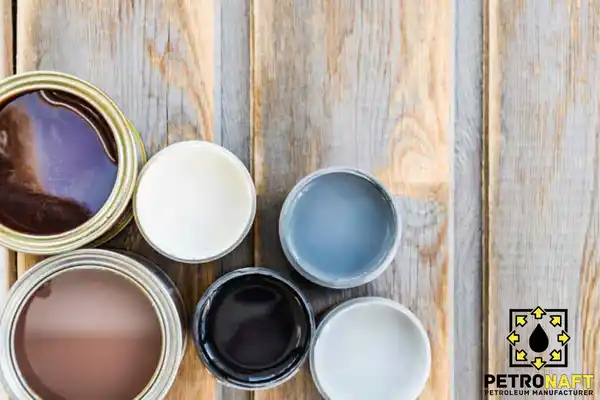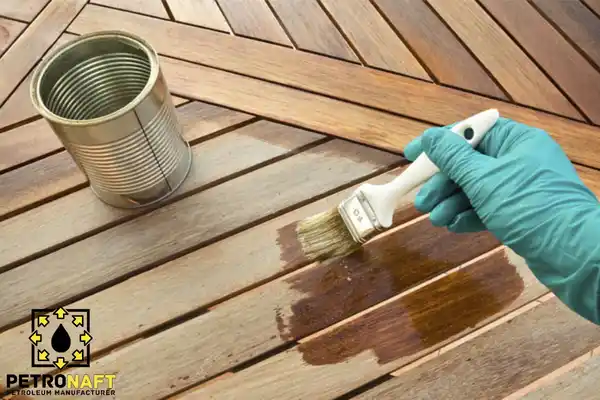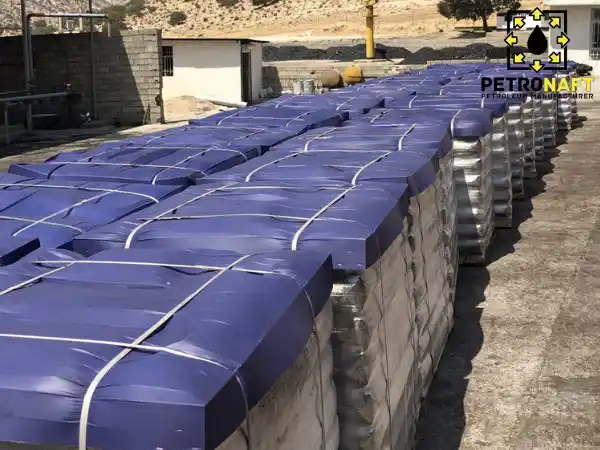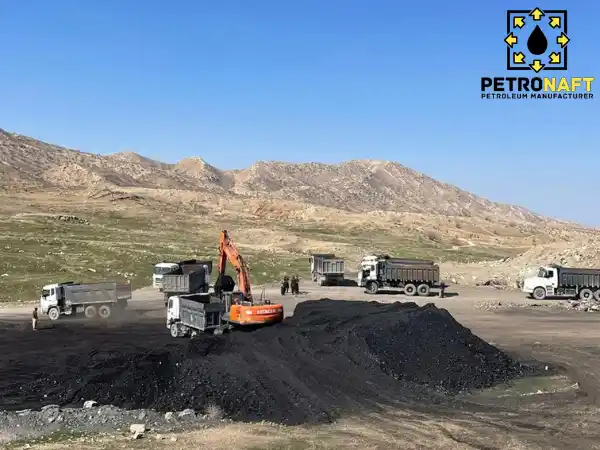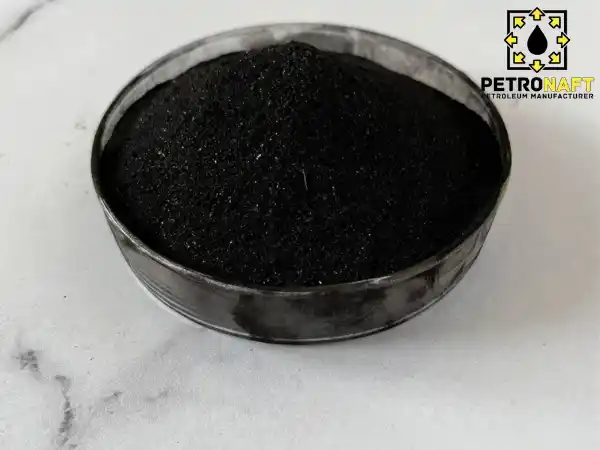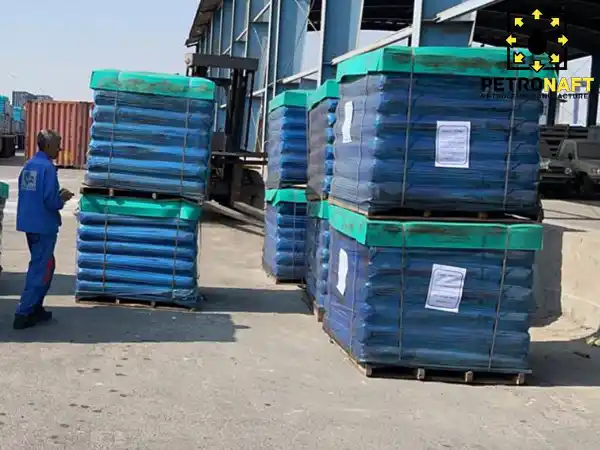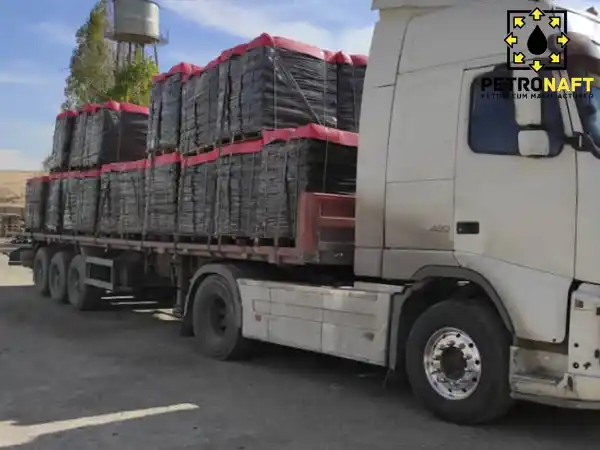GILSONITE FOR INK / PAINT / STAIN
Content Overview
INTRODUCTION OF GILSONITE FOR INK / PAINT / STAIN
There is a kind of mineral known as gilsonite ( Gilsonite for ink / paint / stain ), which is also known as natural asphalt (natural bitumen), and it can be discovered in certain areas of the world. It has a broad range of applications in the real world. In the industries that produce paints, inks, coatings, and stains, the usage and application of Gilsonite are frequent because of the properties of the material, which include adhesion, resistance to water and moisture, a competitive price, and so on and so forth. The Petro Naft Company has a wealth of expertise in providing gilsonite to a wide variety of sectors on a national and worldwide scale. Gilsonite is put to use in a variety of products, such as ink, paint, polished oils, anti-corrosion coating, covering autos to protect against UV radiation, and wood stains, as will be discussed in the next section.
PETRO NAFT Co. manufactures the highest quality Gilsonite / Natural Asphalt / Natural Bitumen in different types and grades and exports them from Iran, Turkey, and the United Arab Emirates to other countries around the world.
Gilsonite Iran for ink / paint / stain
Natural Asphalt Iran for ink / paint / stain
Natural Bitumen Iran for ink / paint / stain
GILSONITE IN INK INDUSTRY
Every time you read a book, newspaper, or magazine; you have the opportunity to experience some of the benefits that Gilsonite offers. Gilsonite is the primary component in the manufacturing of “no rub” inks, which are in great demand among customers all over the world, including in the United States of America, Europe, Japan, and other regions of the world. Jet black printing in a range of heat set printed magazines and other high-quality publications simply would not be possible if Gilsonite did not possess its remarkable carbon black dispersion capabilities. Gilsonite delivers economic performance too. When compared with hydrocarbon and phenolic resins, its price point is much more competitive. Since Gilsonite possesses an inherent advantage over other materials, you can rely on it to provide an advantage in terms of performance.
- Extraordinary adhesive properties, perfect for use in scratch-resistant high-performance inks
- Due to its one-of-a-kind properties, it is an efficient agent for the dispersion of carbon black.
- Hydrocarbon resins, phenolic resins, and metal resonates as an ink additive can be replaced with an alternative that is affordably priced.
The first wet carbon agent to be employed in the black inks that are utilized in newspapers and magazines is gilsonite. These black inks, which are also referred to as organic inks, are utilized in printing. It is possible to make use of the black and brown pigments that are contained inside this mineral. In order to create printer ink, carbon black and bitumen are often combined in equal parts. This combination becomes substantially stickier when gilsonite is added to it, and its lifespan also improves greatly as a result of this change. In the ink industry, the most significant benefit achieved from the use of this product is the capacity to streamline manufacturing procedures while still preserving material uniformity. Gilsonite is an ingredient that can be used to make a wide variety of inks, such as printer ink, newspaper ink, lithographic and offset ink, gravure ink, and Castel ink, to name just a few.
Gilsonite can be present in extremely high concentrations in the inks that are used for printing newspapers at times. It is advised that this material have a low degree of softness and an ash content of less than 3% in order for it to be used correctly. On the other hand, it is often applied in concentrations ranging from 1% to 5% ash content in a variety of various formulations and color combinations. This is the case in spite of the fact that 5 to 10% ash content is occasionally employed in black ink compounds as a low-cost alternative to other resins in these compounds.
Gilsonite resin is a formidable competitor to petroleum hydrocarbon resins and phenolic resins, and it is able to operate either as a complement to these resins or as a replacement for them entirely. Gilsonite resin is also capable of performing both of these functions simultaneously. Utilizing this substance in a number of different concentrations makes it feasible to produce one-of-a-kind inks that have a high degree of luminosity. This substance is used in the production of black ink rather than using other resins since it is a more economical choice.
GILSONITE IN INK SPECIFICATION:
| Feature | Low Ash (<5%) | Medium Ash (~15%) | High Ash (>20%) |
|---|---|---|---|
| Ash Content | < 5% | ~15% | > 20% |
| Color | Dark Black | Black | Dull Black to Grayish |
| Softening Point | High (170-200°C) | Medium (140-160°C) | Low (120-140°C) |
| Moisture Content | Low (0.5-1.5%) | Medium (1.5-3%) | High (3-5%) |
| Specific Gravity @ 77°F | 1.05-1.10 | 1.00-1.05 | 0.95-1.00 |
| Hardness (Moh’s Scale) | 2.5-3 | 2-2.5 | < 2 |
| Penetration | High | Medium | Low |
| Flash Point (C.O.C.) | High (350°C+) | Medium (300-350°C) | Low (<300°C) |
| Trace Elements | Carbonates, Sulfur (Pyrite), Silica | Carbonates, Clay Minerals, Sulfur | Higher concentrations of impurities like Pyrite |
| Solubility in T.C.E, W% | ~100% | ~85-90% | <80% |
| Solubility in CS2, W% | ~100% | ~90% | <85% |
| Volatile Matter | Low | Medium | High |
GILSONITE IN PAINT INDUSTRY AND GILSONITE IN STAIN INDUSTRY
Because of the one-of-a-kind qualities that Gilsonite has, it enables paint to form a great connection with almost any substance that needs to be protected from the weather. It is an essential low-cost paint ingredient that offers great performance and is used in anticorrosive paints, underbody paints, and pipe coatings. In this application, the distinctive qualities of Gilsonite make it both a binder to preserve the wood and a pigment that offers a deep, rich color that does not fade over time. Because of Gilsonite’s outstanding performance, you can find it in the majority of wood stains manufactured across the globe. The performance of the Gilsonite additive is incomparable to that of any other substance, whether it be natural or manufactured, and there is just no way to achieve it.
- Superior adhesion characteristics for a variety of different materials
- Resistance to ultraviolet light
- Wood stains get their deep, rich color from pigments that are clear and resistant to fading.
Gilsonite In Paint Industry:
In paints, gilsonite has the capacity to improve both the hardness and the adherence of the coating. In general, the employment of bituminous paints is a well-known and frequent practice. This is particularly true for paintings that need to be able to survive extreme weather conditions or are susceptible to corrosion.
This mineral can be used as a modifier in asphalt-based paints; it smoothest out the texture of the paint while also raising its gloss level. In point of fact, paints made with bitumen are of poor quality; nevertheless, the qualities of the paint can be enhanced with the use of gilsonite. This is due to the fact that gilsonite maintains the qualities of bitumen and can be applied appropriately on any surface.
When used as paint, gilsonite creates a great connection with practically any material, making it an ideal choice for use as a protective coating paint. It is well recognized in the paint business as an addition that is much more affordable than other additives with a functionality that is comparable.
Due to the high UV resistance of gilsonite paints, they find widespread use in the automobile sector both as a coating for chassis and as a coating for metal structures. This substance has the potential to deliver paint and coating beneficial qualities.
This mineral has a strong resistance to acids, water, and chemicals due to the fact that it is abrasive and chemically neutral at the same time. Therefore, it is suitable for use in waterproof coatings and automobile radiators. The qualities of the bitumen can be altered by altering the colloidal equilibrium as well as by eliminating the oil and wax from it. If these oils and waxes make their way to the outside surface of the coating, it will cause the gloss of the coating to diminish, and if they make their way to the inner surface of the coating, it will cause the coating to adhere less effectively. These coatings can be formulated in a number of different ways, and each of those ways is suitable for a particular usage.
Gilsonite’s ability to adhere is a result of both its high nitrogen content and its inherent asphaltic characteristics. Because of this quality, it is feasible to employ these paints in the process of protecting materials by acting as anti-corrosion coatings and protective coatings against moisture.
In addition, a specific kind of Gilsonite is used in the production of asphalt black paints and polished oils. Additionally, it can be utilized to generate a solution with a hue somewhere between black and brown that is used in the bituminous coating of gas and sewage pipelines.
GILSONITE FOR PAINT SPECIFICATION:
Parameter | 1-5% Ash | 5-10% Ash | 10-15% Ash | 15-20% Ash | >20% Ash |
Softening Point | 185-220°C (356-428°F) | 185-205°C (365-401°F) | 195-215°C (383-420°F) | 195-215°C (383-420°F) | >215°C (>420°F) |
Moisture Content | ≤1.5% | ≤1.5% | <1.5% | <1.5% | <1.5% |
Penetration | 0-2 (at 25°C, 100 gm, 5 sec.) | 0-2 (at 25°C, 100 gm, 5 sec.) | 0-2 (at 25°C, 100 gm, 5 sec.) | 0-2 (at 25°C, 100 gm, 5 sec.) | 0-2 (at 25°C, 100 gm, 5 sec.) |
Specific Gravity | 1.04-1.16 | 1.04-1.16 | 1.04 | 1.04 | 1.04 |
Sulfur Content | 0.3% | 3% Typical | 3% Typical | 3% Typical | 3% Typical |
Color | Black | Black | Black | Black | Black |
Gilsonite In Stain Industry:
The production of an adhesive and a coating for the surface of wood is the purpose served by the use of gilsonite in wood stains. Because of its rich brown tint, it is often used as a paint for wood. This mineral is capable of producing colors with a better resolution that do not fade with time, which is something that cannot be accomplished with other natural or manufactured materials.
In addition to that, it is used as a shade of dark brown while painting on wood. Gilsonite is a mineral that has distinct chemical and physical characteristics, and because of this, it can give helpful features for paints on wood.
ADVANTAGES OF GILSONITE IN PAINT, INK, AND STAIN INDUSTRY
Gilsonite for stain, paint and ink has the following advantages:
- Low-cost corrosion inhibitors that can be added to paints
- Paints for wooden surfaces as well as coatings for pipes
- Inks with a high viscosity used for publications such as journals, newspapers, and magazines
- Printing in black of a high grade and consistent darkness for the ink industry
- The ability of the paint to withstand exposure to UV light
- As an insulating component in bitumen-based paint used for coating pipelines and water tanks
- Prevent the colors from fading and ensure that the colors stay crisp.
- Create brilliance in color
- A high level of resistance to alkalis, chemicals, and water
- A natural option that is less expensive than a number of other resins
APPLICATIONS OF GILSONITE FOR INK / PAINT / STAIN
- Gilsonite is used in companies that create paints, inks, coatings, and stains because of its stickiness, resilience to water and moisture, competitive pricing, etc. Petro Naft provides gilsonite to a range of industries nationally and globally. Gilsonite is used in ink, paint, polished oils, anti-corrosion coating, UV car coating, and wood stains.
- In paints, gilsonite improves hardness and adhesion. Bituminous paints are widely used. This is especially true for weatherproof or corrosion-prone paints.
- Using gilsonite in wood stains creates an adhesive and covering for wood. Its deep brown color makes it a popular wood paint. This mineral can produce colors with a higher resolution that don’t fade over time, unlike other natural or synthetic materials.
IRAN GILSONITE / IRAN NATURAL ASPHALT / IRAN NATURAL BITUMEN
The mines of western Iran (Ilam, Gilangharb, Eyvangharb, and Lorestan) are where the Petronaft Gilsonite Lump is mined, and then it is brought to the plant site to be stored there. Gilsonite lumps are poured into the hopper by the digger loader as they are broken up. After that, they are brought to the hammer mill by means of a strip conveyor. In this way, Gilsonite is divided into different grades based on the percentage of ash present and the desired size. The required tests are then completed, quality control is performed, and the product is packaged and ready to be exported in different types and grades from Iran, Turkey, and the UAE to other countries around the world.
At this time, PETRO NAFT is manufacturing a variety of grades of gilsonite, including the following:
- Granulated Gilsonite
- Micronized Gilsonite Powder
1- Gilsonite with ash content up to 5%, moisture up to 1% and meshes 30, 40, 100 to 300.
2- Gilsonite with ash content up to 10%, moisture up to 1% and meshes 30, 40, 100 to 300.
3- Gilsonite with ash content up to 15%, moisture up to 1% and meshes 30, 40, 100 to 300.
4- Gilsonite with ash content up to 20%, moisture up to 1% and meshes 30, 40, 100 to 300.
5- Gilsonite with ash content up to 25%, moisture up to 1% and meshes 30, 40, 100 to 300.
Understanding Global Gilsonite Prices: A Must-Read Comprehensive Guide for Better Comprehension
Latest Gilsonite Price Trends: A Comprehensive Report
Understanding Iran’s Gilsonite Price: A Must-Read Comprehensive Guide to Improve Your Knowledge
PACKING OF GILSONITE FOR INK / PAINT / STAIN
Jumbo Bags-PP Bags- Multi paper Bag-Bulk on Vessel


